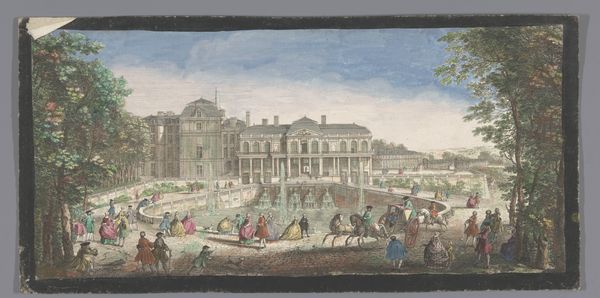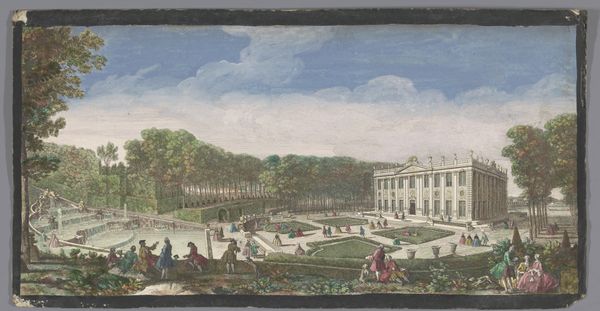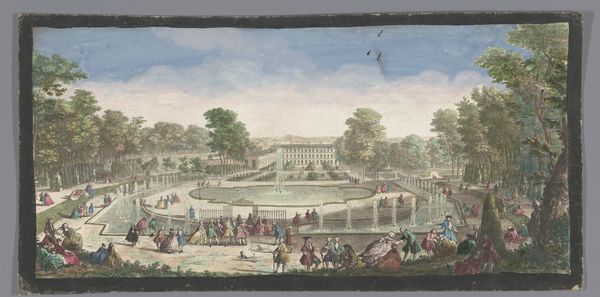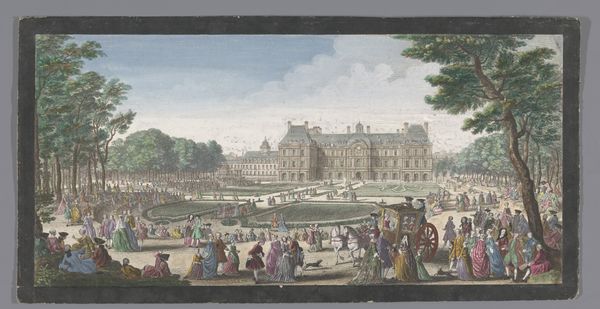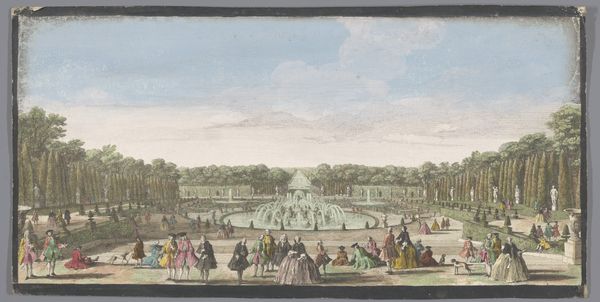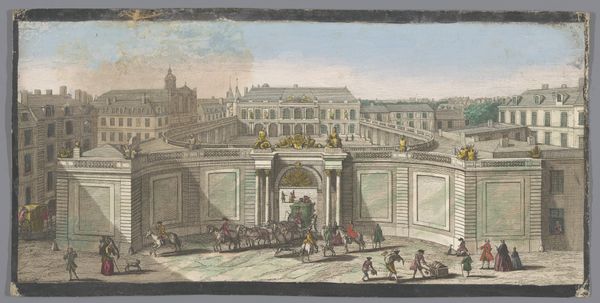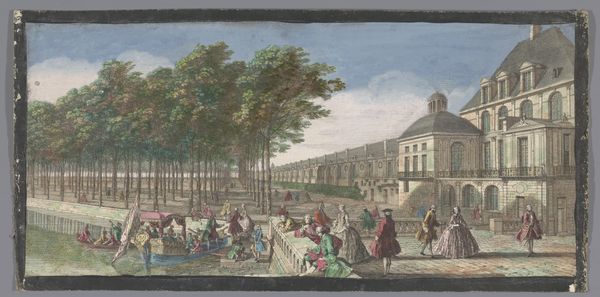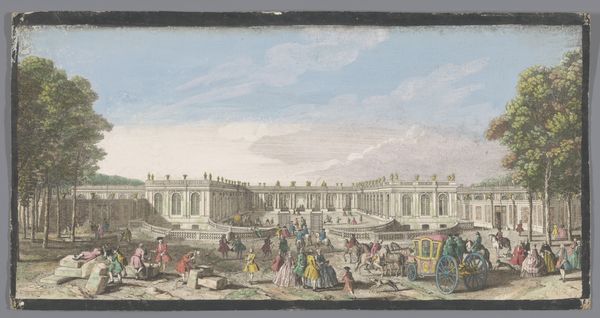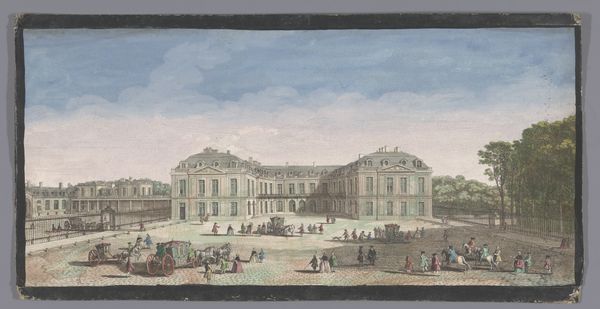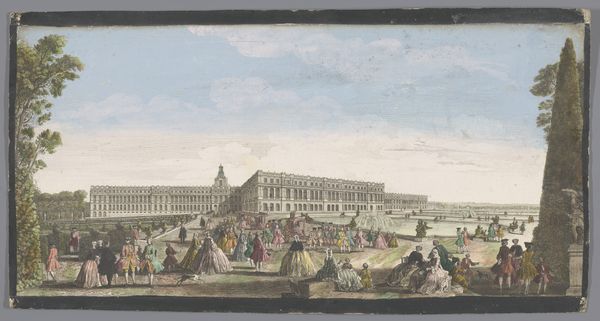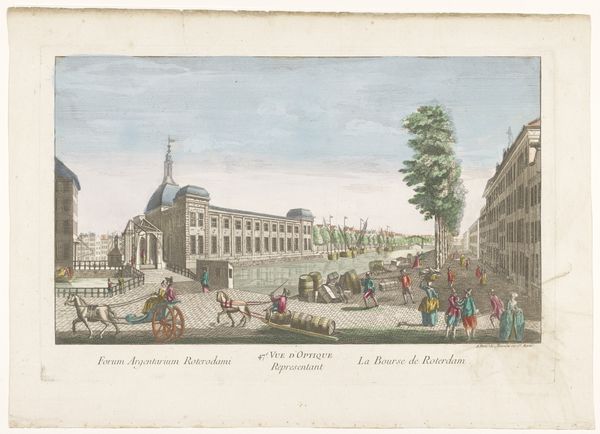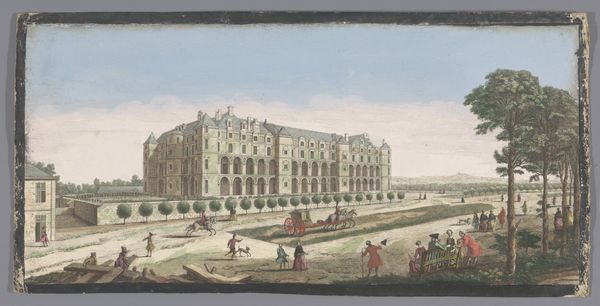
Dimensions: height 249 mm, width 477 mm
Copyright: Rijks Museum: Open Domain
Curator: Looking at this work, "Gezicht op de voorzijde van het Château de Marly," dating back to the 18th century, now residing in the Rijksmuseum. What immediately comes to mind for you? Editor: I am struck by the pastel hues and what seems like a casual display of opulence. Almost feels as if this should be viewed through the critical lens of eco-feminism when considering landscapes of such vast and exclusive power. Curator: Exactly, let’s consider how images like these reinforced and naturalized existing power structures, through cityscapes and genre painting. We're presented with a snapshot of elite leisure, of a meticulously crafted Neoclassical landscape. It’s important to note that, although seemingly calm and pastoral, Marly was built upon displacement, demanding immense resources and labor from a specific demographic while visually offering pleasure to only a limited class. Editor: I agree, it's a meticulously curated vision, erasing the difficult history of construction. We're seeing watercolor and what looks like colored pencil; this is not about raw, unfiltered truth. The figures scattered in the foreground are almost like ornaments, a diverse performance in a rigid class system. Curator: Precisely! The presence of people serves as an artistic measure but it is more a display of status, not individuality. The scale of the Château, and even its precise architectural rendering through Neoclassical motifs, communicates a visual and societal hierarchy meant to underscore specific positions of dominance within the society of the time. Even the dogs here function as symbols of privilege. Editor: And to what end does this calculated depiction of luxury serve in a contemporary context? Do we critically question how the piece functions or once functioned as propaganda? Curator: That’s a crucial point. What narratives are we upholding when we present this image, and whose perspectives are marginalized by its continued display? The museum’s institutional framing and contextualisation has such power and therefore, bears that very important responsibility. Editor: So true! Looking closely at it now, I can’t help but see not only an illustration of its time but also how such artwork actively promotes social critique through the unearthing of uncomfortable truths, ultimately making visible existing systematic injustices. Curator: Absolutely. By engaging critically with works like these, we actively work to ensure history isn't romanticized at the expense of those whose lives were affected by these power dynamics. Editor: I agree! I appreciate how viewing art through a modern framework can expose important intersectional and deeply-layered socio-political meanings!
Comments
No comments
Be the first to comment and join the conversation on the ultimate creative platform.
